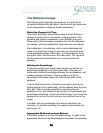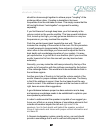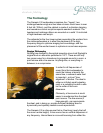
14
1414
14
absolute fidelity
panels about 2 to 5 degrees towards your seating position until you
have a properly defined center image.
When properly set up very little sound should appear to come
directly from the speaker, instead, the sound stage should extend
far beyond the left and right edge of the loudspeakers and they
should have tremendous front to back depth. When the recording is
close miked (when the instrument or performer is very close to the
recording microphone) the music may appear to come directly
from the loudspeaker. This is normal. Typically, however, the
sound should appear to be detached from the loudspeakers.
A simple rule of thumb to follow is that focus will be achieved by
placing the speakers closer together or farther apart, and front to
back depth can be adjusted by the distance from the rear wall.
Further, as the system “breaks in”, the depth and width of the
soundstage will increase, and so will the “smoothness” of the
sound.
Phase Control
We suggested in the beginning of this manual to set the phase to
zero degrees. Now that you have roughed the system in, you may
want to experiment with different phase angles.
Using the remote control you can adjust the woofer's phase angle
up and down in five-degree increments.
The changes are subtle and they usually affect the imaging and
soundstage. Listen carefully to the positioning (in acoustic space)
of the orchestral players as you change the phase control. You
may notice small shifts in their apparent relationship to the other
members of the orchestra. Do not expect them to actually move.
Expect minute changes in the soundstage, the apparent width of
the stage, your ability to distinguish individual players etc. If you
reach a phase shift of ninety degrees you have probably gone too
far. Using the recommended connection, the phase shift needed is
usually below ten.
The other change to listen for is coherence and timing. Adjust the
phase will subtly change the relationship between the bass and the
midrange. When you get the phase perfectly correct, you will find that
the timing between the vocalist and the double bass “snaps” in place,


















